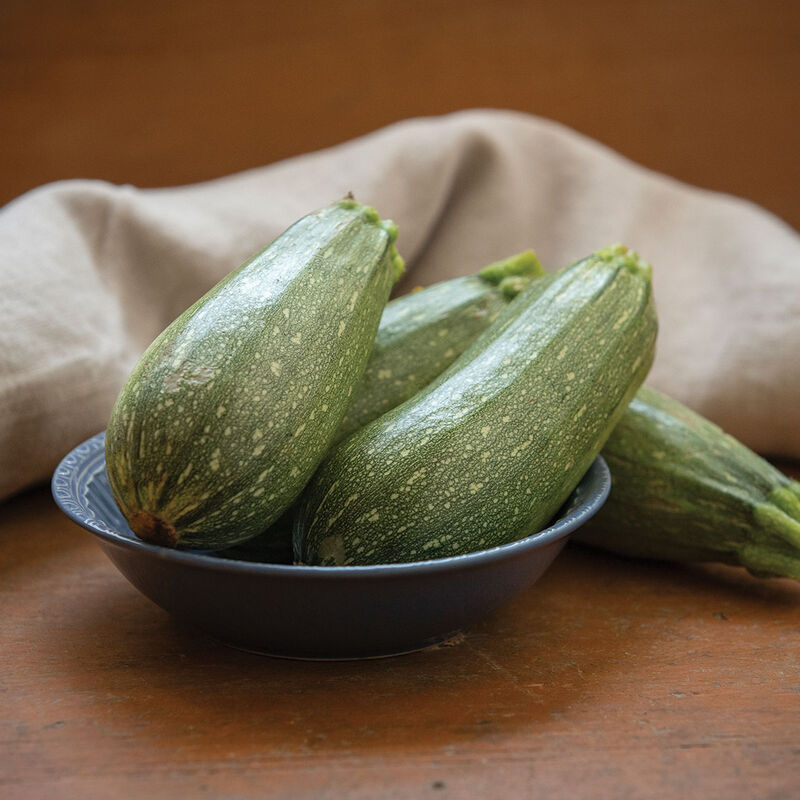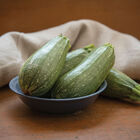Mexicana Organic (F1) Zucchini Squash Seed
Mexicana Organic (F1) Zucchini Squash Seed
Mexican gray zucchini.
Upright plants with an open habit and moderate spines for ease of harvest. Strong disease resistance. Produces early, heavy yields of gray-green, slightly bulbous fruits with remarkable uniformity, great texture, and a refined flavor profile. USDA Certified Organic.Disease Resistance:
Specs:
- This product does not ship to the following countries: United Arab Emirates, Austria, Australia, Barbados, Belgium, Bulgaria, Bermuda, Bahamas, Switzerland, Cyprus, Czech Republic, Germany, Denmark, Estonia, Spain, Finland, France, United Kingdom, Greece, Hong Kong, Croatia, Hungary, Ireland, Iceland, Italy, Japan, Republic of Korea, Kuwait, Cayman Islands, Lithuania, Luxembourg, Latvia, Malta, Netherlands, Norway, New Zealand, Oman, Poland, Portugal, Qatar, Romania, Saudi Arabia, Sweden, Singapore, Slovenia, Slovakia, San Marino, Thailand, Trinidad and Tobago, Taiwan, Ukraine.
SCIENTIFIC NAME:
Cucurbita pepoCULTURE:
Fertile, well-drained soil with a pH of 5.8–6.8 is best. Plastic mulch and fabric row covers (AG-19 grade) can aide plant establishment and exclude insect pests during the seedling stage. Row covers should be removed when plants begin to flower. Poor fruit development may indicate insufficient pollination. For highest quality fruit, succession plantings every 2-3 weeks may be needed.PLANT SPACING:
Space plants 18-24" apart in rows 6' apart. Wider spacing may allow for easier harvesting.DISEASES:
Common cucurbit diseases include powdery mildew, downy mildew, bacterial wilt, and phytophthora. Avoid problems with adequate soil drainage, good air flow, insect pest control, and crop rotation. If necessary, check with your local Cooperative Extension Service agent for specific control options.INSECT PESTS:
Cucumber beetles, squash bugs, and vine borers are all common pests for cucurbits. Protect young plants with floating row cover. Squash bug eggs found on the undersides of leaves may be crushed by hand. For vine borers, cut out of vines and hill soil over the wound. Keep field borders mowed and remove plant refuse in the fall; spring plow to bury pupae. Pyrethrin sprays may offer some control.HARVEST FRUIT:
For some varieties, it is common for the first fruits to be malformed, wither, or blacken, which indicates poor pollination and is usually remedied as more male flowers appear. Harvest regularly, 2-3 times a week, once plants begin to produce. Cut or gently twist off fruits when they have reached the desired size. For zucchini, 6-8" long. Handle with care to avoid scratching fruits.HARVEST BLOSSOMS:
Harvest male blossoms (with thin stems) or female blossoms (with thick stems and an immature fruit at the base of the flower) in mid to late morning when fully open. Clip flowers 1-2" below flower base. If a squash fruit crop is also desired from the same planting, only harvest male flowers, leaving a few to pollinate the female flowers.STORAGE:
Keep fruit at 40-50°F (5-10°C), 95% relative humidity for up to 2 weeks. Use as soon as possible for best quality.DAYS TO MATURITY:
From direct seeding; subtract about 14 days if transplanting.AVG. DIRECT SEEDING RATE:
(at 3 seeds/ft., rows 6' apart) 250 seeds/83', 500 seeds/166', 1,000 seeds/333'.SEED SPECS:
SEEDS/LB.: Zucchini: Avg. 3,400.PACKET:
25 seeds, (unless otherwise noted) sows 8'.Johnny's is committed to your success, every step of the way.
We want you, our customer, to be 100% satisfied with all of our seeds, tools, and supplies.
If anything you purchase from us proves unsatisfactory, we will either replace the item or refund the purchase price.




